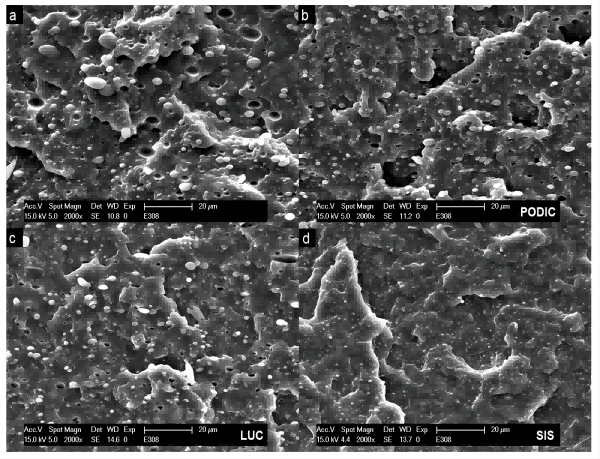An adequate quantity of an antioxidant or anti-aging masterbatch is added to the plastic in order to provide it high weather resistance. Following testing, the test item is exposed to UV light from a xenon lamp for 1000 hours, or one year. The tensile strength and impact strength remain unaffected. 88% and 86%, respectively, are the rates. Impact strength and tensile strength retention rates are 74% and 71%, respectively, whereas the duration of Xenon lamp UV radiation is 3000h, or three years. Long service lives and little environmental contamination from waste plastics are both benefits of plastic's remarkable age resistance.
Applied toughener to PP modification
汎用プラスチックの5つのうちの1つであるポリプロピレンは、成型減率が大きく、反りや歪みが早いため、エンジニアリング・プラスチックや構造材料としての用途は限られている。このシステムを強化し、調整し、炭酸カルシウムを添加する。この複合材料は、より安価でありながら、様々な典型的な機械的性質を達成することができ、ポリプロピレンの用途の幅が広がる。
1. Calcium carbonate activation
With the growing growth of the composite material sector, toughener producers have discovered that calcium carbonate serves as both a filler and a significant modifier. Calcium carbonate may be added to the polypropylene blending modification method to increase stiffness and heat resistance while lowering the product's cost of raw materials and molding shrinkage ratio.
Calcium carbonate, on the other hand, is an inorganic filler that is compatible with polypropylene. Since the capacity is low, activation treatment is needed before use to strengthen the bonds between the molecular chains of the polymer and the calcium carbonate and to enhance the mechanical qualities of filled polypropylene materials. The producers of tougheners advise employing hefty calcium carbonate with a mesh size of at least 1000. Activate the calcium carbonate by placing it in a high-speed agitator after drying, adding the required amount of phosphate ester coupling agent, and stirring at a high speed for 15 to 20 minutes. Alternatively, use active ground calcium carbonate with a mesh size of 1000 or higher.
The impact strength of the system in the blending system grows fast at initially, increases slowly after 30 parts, and falls after 40 parts as the amount of activated calcium carbonate increases. The coupling agent can increase the impact of the substance by activating the calcium carbonate. Because the activated calcium carbonate particle surface's physical and chemical characteristics have altered and are now simpler to distribute in the matrix, the strength has increased. There will be an aggregation and buildup of inorganic particles when the calcium carbonate content surpasses a particular threshold, making the blending method ineffective. The structure develops internal flaws, which cause a deterioration in a number of mechanical qualities. Consequently, the dosage of calcium carbonate should not exceed 40 parts.
2. How a toughening agent affects the mixing system
In order to give PP superior toughness and outstanding processability, tougheners are utilized.
(2) The chemical structure of the toughening agent, which has high aging resistance, has no unsaturated double bonds.
(3) 強化剤は流動性があり、ポリオレフィンと相溶性があり、分子量分布が狭い。
(4)製品の溶接線強度とフィラーの分散影響は、いずれも良好な流動性によって向上させることができる。
The impact strength and elongation at break of the system are significantly increased with the addition of toughener. As can be shown, PP and activated calcium carbonate are compatible with the toughening agent, which also has a good toughening effect on PP. This is due to the narrow molecular weight distribution of the toughening agent and the longer side octyl group than the side ethyl group in the molecular structure, which can form a molecular connection point and function as a connection and buffer between the components, allowing the system to function when it is impacted.
As impact energy is distributed and buffered, there is less chance that stress-induced crazes will turn into fractures, increasing the system's impact resistance.
これらの接続部位によって生成される網目構造は、系が張力を受けている間に相当な変形を経験する可能性があり、これにより系の破断伸度が著しく増大する。強靭化剤の性能自体が系の引張強さ、曲げ強さ、曲げ弾性率を決定するので、強靭化剤の含有量が増加する場合、強靭化剤の含有量を20%以下に抑える必要がある。












